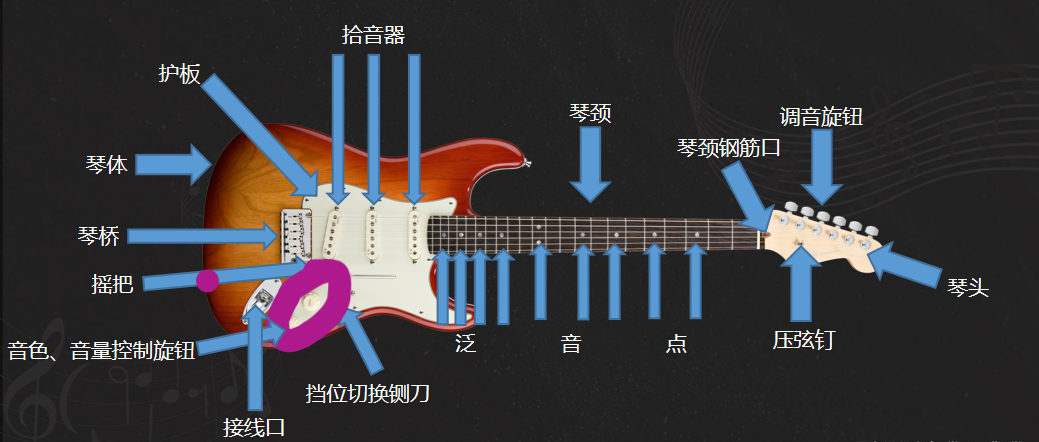RP2040 C SDK SysTick滴答定时器功能使用
- ✨更好的阅读体验请移步到:飞书-云文档:
https://u1etqmuwl9z.feishu.cn/wiki/VkoHwPGqHierOEkY651cZvaOntg?from=from_copylink
- RP2040的SysTick滴答定时器为24位的,计数方式为倒计时,扩展了处理器和NVIC的功能,并提供:
- 一个24位的系统计时器(SysTick)
- 附加的可配置优先级SysTick中断。
SysTick计时器使用1μs脉冲作为时钟启用。这是在监视器块中作为timer_tick中生成的。SysTick计时的准确性取决于这个计时器的准确性。SysTick计时器也可以从系统时钟开始运行(参见SYST_CALIB)。
📗有关寄存器介绍
- SYST_CSR Register:使用SysTick控制器和状态寄存器来启用SysTick功能。
- 偏移地址:0xe010
- SYST_RVR Register:
- Offset: 0xe014
Use the SysTick Reload Value Register to specify the start value to load into the current value register when the counter reaches 0. It can be any value between 0 and 0x00FFFFFF. A start value of 0 is possible, but has no effect because the SysTick interrupt and COUNTFLAG are activated when counting from 1 to 0. The reset value of this register is UNKNOWN.
To generate a multi-shot timer with a period of N processor clock cycles, use a RELOAD value of N-1. For example, if the SysTick interrupt is required every 100 clock pulses, set RELOAD to 99.

- SYST_CVR Register
- Offset: 0xe018
Use the SysTick Current Value Register to find the current value in the register. The reset value of this register is UNKNOWN.
- SYST_CALIB Register
- Offset: 0xe01c
Use the SysTick Calibration Value Register to enable software to scale to any required speed using divide and multiply

📘滴答定时器作为非阻塞定时任务调度使用
/*
CMSIS-DAP烧录命令:openocd -f interface/cmsis-dap.cfg -f target/rp2040.cfg -c "adapter speed 5000"-c "program RP2040_ticks.elf verify reset exit"
jlink命令: openocd -f interface/jlink.cfg -f target/rp2040.cfg -c "adapter speed 2000" -c "program RP2040_ticks.elf verify reset exit"
*/
#include <stdio.h>
#include "pico/stdlib.h"
#include "hardware/timer.h"
#include "hardware/structs/systick.h"
#include "hardware/clocks.h"
//#include "hardware/uart.h"
//#include "hardware/irq.h"
//#include "hardware/structs/scb.h"
#include <tusb.h>
#define BUILTIN_LED PICO_DEFAULT_LED_PIN // LED is on the same pin as the default LED 25
void measure_freqs(void);
void MicrosBlink(uint32_t currentTime);
uint32_t previousBlinkTime;
uint32_t blinkInterval = 1000000; //LED闪烁时间间隔
bool toggle;
int main()
{
// set_sys_clock_khz(133000, true); // 325us
// set_sys_clock_khz(270000, true);
stdio_init_all();
// GPIO initialisation.
gpio_init(BUILTIN_LED);
gpio_set_dir(BUILTIN_LED, GPIO_OUT);
gpio_pull_up(BUILTIN_LED);
sleep_ms(1);
while (!tud_cdc_connected()) { sleep_ms(100); }//等待USB CDC打开
printf("tud_cdc_connected()\n");
systick_hw->csr = 0x5;
systick_hw->rvr = 0x00FFFFFF;
uint32_t new, old, t0, t1;
old=systick_hw->cvr;
t0=time_us_32();
sleep_us(49999);
new=systick_hw->cvr;
t1=time_us_32();
printf("\n old_cvr=%d,new_cvr=%d\n",old,new);
printf("\n old-new=%d\n",old-new);
printf(" t1-t0=%d\n",t1-t0);
printf("(old-new)/(t1-t0)=%.1f\n",(old-new)/(t1-t0*1.0));//频率
measure_freqs();
while (true)
{
// tight_loop_contents();
// sleep_ms(1000);
// gpio_xor_mask(1ul << BUILTIN_LED); // Toggle the LED
uint32_t currentMillis = time_us_32(); // 获取当前时间
MicrosBlink(currentMillis);
}
return 0;
}
void measure_freqs(void) {
uint f_pll_sys = frequency_count_khz(CLOCKS_FC0_SRC_VALUE_PLL_SYS_CLKSRC_PRIMARY);
uint f_pll_usb = frequency_count_khz(CLOCKS_FC0_SRC_VALUE_PLL_USB_CLKSRC_PRIMARY);
uint f_rosc = frequency_count_khz(CLOCKS_FC0_SRC_VALUE_ROSC_CLKSRC);
uint f_clk_sys = frequency_count_khz(CLOCKS_FC0_SRC_VALUE_CLK_SYS);
uint f_clk_peri = frequency_count_khz(CLOCKS_FC0_SRC_VALUE_CLK_PERI);
uint f_clk_usb = frequency_count_khz(CLOCKS_FC0_SRC_VALUE_CLK_USB);
uint f_clk_adc = frequency_count_khz(CLOCKS_FC0_SRC_VALUE_CLK_ADC);
uint f_clk_rtc = frequency_count_khz(CLOCKS_FC0_SRC_VALUE_CLK_RTC);
printf("pll_sys = %dkHz\n", f_pll_sys);
printf("pll_usb = %dkHz\n", f_pll_usb);
printf("rosc = %dkHz\n", f_rosc);
printf("clk_sys = %dkHz\n", f_clk_sys);
printf("clk_peri = %dkHz\n", f_clk_peri);
printf("clk_usb = %dkHz\n", f_clk_usb);
printf("clk_adc = %dkHz\n", f_clk_adc);
printf("clk_rtc = %dkHz\n", f_clk_rtc);
// Can't measure clk_ref / xosc as it is the ref
}
void MicrosBlink(uint32_t currentTime) {
//检查是否到达时间间隔
if (currentTime-previousBlinkTime >= blinkInterval) { //如果时间间隔达到了
toggle = (toggle == 1) ? 0 : 1;
gpio_put(BUILTIN_LED, toggle);
previousBlinkTime = currentTime; // 将上一次时间复位
printf("toggle = %d\n",toggle);
}
}

📙利用库实现
- 📍
https://github.com/Blimp01/pico_non_blocking_timer
/*
CMSIS-DAP烧录命令:openocd -f interface/cmsis-dap.cfg -f target/rp2040.cfg -c "adapter speed 5000"-c "program example.elf verify reset exit"
jlink命令: openocd -f interface/jlink.cfg -f target/rp2040.cfg -c "adapter speed 2000" -c "program example.elf verify reset exit"
*/
#include <stdio.h>
#include "pico/stdlib.h"
#include "hardware/gpio.h"
#include "pico/binary_info.h"
#include "non_blocking_timer.h"
const uint LED_PIN = 25;
non_blocking_timer_handler led_timer; // create user timer struct
void toggle_led()
{
gpio_put(LED_PIN, !gpio_get(LED_PIN));
}
int main()
{
stdio_init_all();
init_non_blocking_timer(&led_timer, 1000,0); //initalise ledtimer for a 1second period
init_systick(); //init and enable systick
gpio_init(LED_PIN);
gpio_set_dir(LED_PIN,GPIO_OUT);
start_non_blocking_timer(&led_timer);
while(1)
{
if(non_blocking_timer_expired(&led_timer) == TIMER_EXPIRED)
{
printf("systick %ld\r\n",get_systick()); //Print out systick value
toggle_led(); //Toggle LED 1s On 1s OFF
start_non_blocking_timer(&led_timer); //restart 1s timer
}
}
}
📗使用滴答定时器中断
/*
CMSIS-DAP烧录命令:openocd -f interface/cmsis-dap.cfg -f target/rp2040.cfg -c "adapter speed 5000"-c "program RP2040_ticks.elf verify reset exit"
jlink命令: openocd -f interface/jlink.cfg -f target/rp2040.cfg -c "adapter speed 2000" -c "program RP2040_ticks.elf verify reset exit"
*/
#include <stdio.h>
#include "pico/stdlib.h"
#include "hardware/exception.h"
#include "hardware/timer.h"
#include "hardware/structs/systick.h"
#include "hardware/clocks.h"
// #include "hardware/uart.h"
// #include "hardware/irq.h"
#include <tusb.h>
#define BUILTIN_LED PICO_DEFAULT_LED_PIN // LED is on the same pin as the default LED 25
void measure_freqs(void);
void MicrosBlink(uint32_t currentTime);
void disableAllInts();
uint32_t previousBlinkTime;
uint32_t blinkInterval = 1000000; // LED闪烁时间间隔
bool toggle;
uint32_t ST_period = 1000000 - 1;
void enableSysTick()
{
// 1mS
systick_hw->rvr = ST_period; // 24 bits
// systick_hw->csr = M0PLUS_SYST_CSR_CLKSOURCE_BITS | M0PLUS_SYST_CSR_ENABLE_BITS | M0PLUS_SYST_CSR_TICKINT_BITS; // enable with processor clock
systick_hw->csr = 0x07; //Enable timer with interrupt
}
void Systick_Handler_Callback(void)
{
systick_hw->csr = 0x00; // Disable systick
systick_hw->rvr = ST_period ; // reload the systick counter
systick_hw->cvr = 0; // Clear the count to force reload
toggle = (toggle == 1) ? 0 : 1;
gpio_put(BUILTIN_LED, toggle); // toggle LED
printf("toggle = %d\n", toggle);
systick_hw->csr = 0x03; // Enable timer with interrupt
}
int main()
{
// set_sys_clock_khz(133000, true); // 325us
// set_sys_clock_khz(270000, true);
set_sys_clock_khz(125000, 0); //clk_sys125MHz
stdio_init_all();
// GPIO initialisation.
gpio_init(BUILTIN_LED);
gpio_set_dir(BUILTIN_LED, GPIO_OUT);
gpio_pull_up(BUILTIN_LED);
sleep_ms(1);
uint32_t fcpu = clock_get_hz(clk_sys);
while (!tud_cdc_connected())
{
sleep_ms(100);
}
printf("tud_cdc_connected()\n");
systick_hw->csr = 0x5;
systick_hw->rvr = 0x00FFFFFF;
uint32_t new, old, t0, t1;
old = systick_hw->cvr;
t0 = time_us_32();
sleep_us(49999);
new = systick_hw->cvr;
t1 = time_us_32();
printf("\n old_cvr=%d,new_cvr=%d\n", old, new);
printf("\n old-new=%d\n", old - new);
printf(" t1-t0=%d\n", t1 - t0);
printf("(old-new)/(t1-t0)=%.1f\n", (old - new) / (t1 - t0 * 1.0)); // 频率
measure_freqs();
enableSysTick();
// register the Systick Handler
exception_set_exclusive_handler(SYSTICK_EXCEPTION, Systick_Handler_Callback);
irq_set_priority(SYSTICK_EXCEPTION, PICO_HIGHEST_IRQ_PRIORITY); // set systick highest priority
while (true)
{
// tight_loop_contents();
// sleep_ms(1000);
// gpio_xor_mask(1ul << BUILTIN_LED); // Toggle the LED
// uint32_t currentMillis = time_us_32(); // 获取当前时间
// MicrosBlink(currentMillis);
// measure_freqs();
}
return 0;
}
void measure_freqs(void)
{
uint f_pll_sys = frequency_count_khz(CLOCKS_FC0_SRC_VALUE_PLL_SYS_CLKSRC_PRIMARY);
uint f_pll_usb = frequency_count_khz(CLOCKS_FC0_SRC_VALUE_PLL_USB_CLKSRC_PRIMARY);
uint f_rosc = frequency_count_khz(CLOCKS_FC0_SRC_VALUE_ROSC_CLKSRC);
uint f_clk_sys = frequency_count_khz(CLOCKS_FC0_SRC_VALUE_CLK_SYS);
uint f_clk_peri = frequency_count_khz(CLOCKS_FC0_SRC_VALUE_CLK_PERI);
uint f_clk_usb = frequency_count_khz(CLOCKS_FC0_SRC_VALUE_CLK_USB);
uint f_clk_adc = frequency_count_khz(CLOCKS_FC0_SRC_VALUE_CLK_ADC);
uint f_clk_rtc = frequency_count_khz(CLOCKS_FC0_SRC_VALUE_CLK_RTC);
printf("pll_sys = %dkHz\n", f_pll_sys);
printf("pll_usb = %dkHz\n", f_pll_usb);
printf("rosc = %dkHz\n", f_rosc);
printf("clk_sys = %dkHz\n", f_clk_sys);
printf("clk_peri = %dkHz\n", f_clk_peri);
printf("clk_usb = %dkHz\n", f_clk_usb);
printf("clk_adc = %dkHz\n", f_clk_adc);
printf("clk_rtc = %dkHz\n", f_clk_rtc);
// Can't measure clk_ref / xosc as it is the ref
}
void MicrosBlink(uint32_t currentTime)
{
// 检查是否到达时间间隔
if (currentTime - previousBlinkTime >= blinkInterval)
{ // 如果时间间隔达到了
toggle = (toggle == 1) ? 0 : 1;
gpio_put(BUILTIN_LED, toggle);
previousBlinkTime = currentTime; // 将上一次时间复位
printf("toggle = %d\n", toggle);
}
// else if (currentTime-previousBlinkTime <= 0) { // 如果时间间隔小于0时间溢出
// previousBlinkTime = currentTime;
// }
}
void disableAllInts()
{
int i;
for (i = 0; i < 32; i++)
{ // 32 interrupts on NVIC
irq_set_enabled(i, false);
}
}
















![[JAVA]介绍怎样在Java中通过字节字符流实现文件读取与写入](https://i-blog.csdnimg.cn/direct/fec738f4ef6e4843a4332b9e00bb3708.png)



